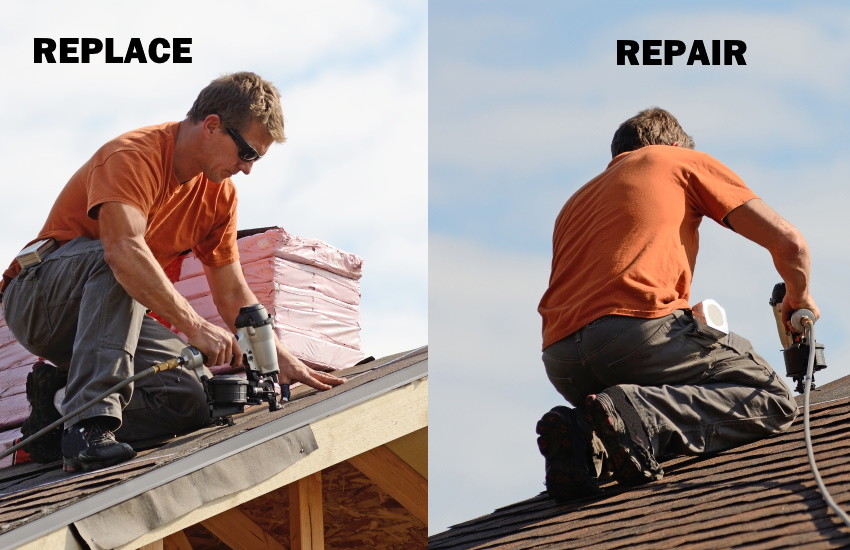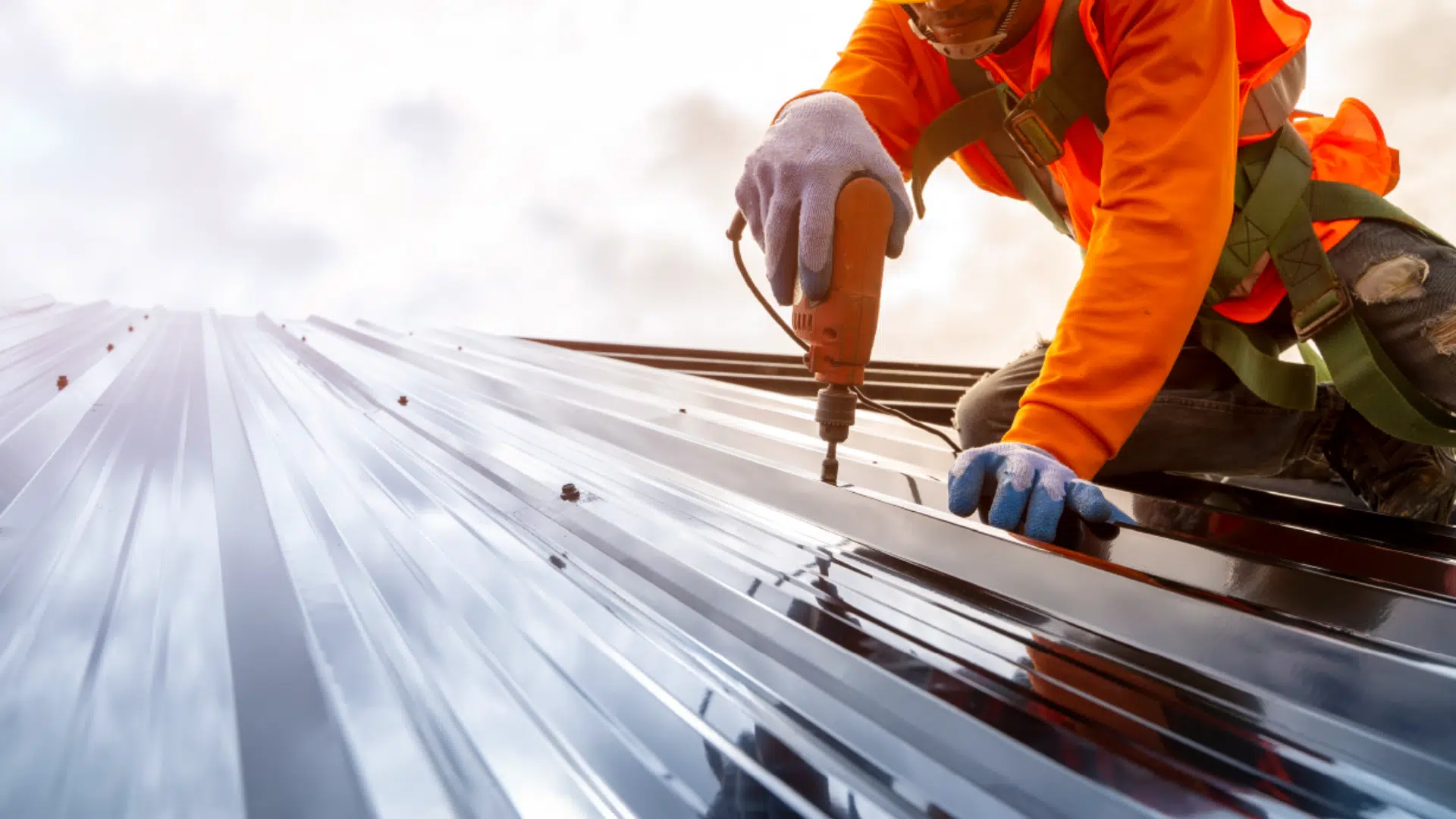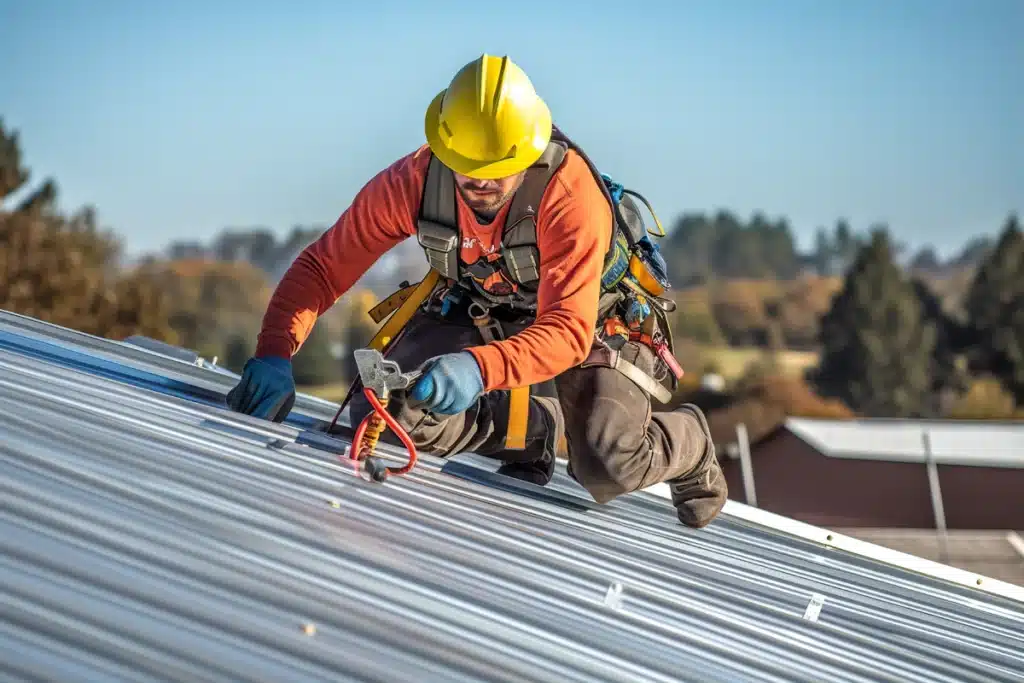Roof Repair Coverage Details Every Homeowner Needs
Wiki Article
Indicators You Required Roof Covering Repair Service: Secure Your Investment With These Easy Checks
Recognizing the indicators that indicate a requirement for roof fixing is essential for securing your residential or commercial property and investment. Typical indications such as missing out on shingles, unanticipated water discolorations, and granules collecting in rain gutters can suggest underlying issues that, if left unaddressed, might intensify into even more significant troubles. Furthermore, indications like drooping locations or increased power bills can also indicate ineffectiveness or damages. To guarantee your roof continues to be in leading condition and to prevent costly repair work, it is vital to recognize these early indication and act as necessary. What actions should you take next?Missing Out On or Harmed Shingles
When reviewing the problem of your roofing, among the most telling indicators of potential concerns is the existence of missing or damaged roof shingles. Roofing shingles work as the first line of protection versus the aspects, and their honesty is important for preserving the total wellness of your roof - Best Roofing Companies In St Louis. A couple of missing tiles might appear minor, but they can lead to substantial water seepage, jeopardizing the underlying structure and demanding a lot more considerable repair workHarmed shingles can materialize in various methods, consisting of curling, breaking, or blistering. Each of these conditions can decrease the performance of your roofing system, permitting moisture to permeate and cause much more extreme issues. Roofing Service. It is necessary to perform routine evaluations, particularly after serious weather condition events, as high winds and heavy rain can intensify shingle damage
If you recognize missing out on or damaged shingles, it is a good idea to attend to these concerns quickly. While minor repairs may be manageable for a property owner, substantial damages often necessitates professional intervention. Timely action can avoid further issues and guard your financial investment, ensuring the durability and performance of your roof.
Water Spots on Ceilings
Water discolorations on ceilings are commonly clear indications of underlying water damages that calls for immediate attention. Recognizing the resource of these discolorations is important, as they can arise from different issues, including roofing system leaks or plumbing troubles. Addressing the root cause not only avoids additional damages however additionally protects the honesty of the home.Identifying Water Damage

When checking for water spots, focus on both the dimension and form of the discoloration. Uneven shapes may suggest recurring leaks, while much more defined locations might show previous problems. In addition, consider the area of the discolorations; spots near plumbing components or exterior walls may provide ideas regarding possible resources of the water intrusion.
It is additionally essential to check out the structure of the ceiling surrounding the stains. Peeling paint or gurgling drywall can signify considerable dampness direct exposure, warranting prompt focus. Normal evaluations and timely action can assist avoid extra extreme water damages, securing both the architectural stability of the home and the investment it represents. Always get in touch with a specialist for a complete assessment if you discover water spots on your ceilings.
Causes of Spots
What aspects add to the look of discolorations on ceilings? Water stains, usually manifesting as stained spots, are primarily brought on by leakages in the roof or pipes systems - I&E Roofing & Construction, Inc.. When moisture permeates via roof covering materials or compromised pipes, it can build up and result in visible discoloration on ceilingsOne typical cause is damaged or missing out on shingles, which can permit rainwater to leak right into the attic and, ultimately, to the ceilings listed below. In addition, improper flashing around smokeshafts, vents, or skylights can be a considerable source of water intrusion. Pipes leaks, whether from faulty pipes or overflowing components, can likewise create spots, especially in areas directly below bathrooms or kitchen areas.

Identifying the resource of the tarnish is crucial for effective repair service. Ignoring these signs can result in much more extensive damage, consisting of mold development and architectural weakening, underscoring the significance of prompt intervention to secure your investment.
Granules in Rain gutters
Throughout regular examinations of your gutters, the visibility of granules can be a substantial indicator of roofing damage. These little, sand-like particles are normally located on the surface of asphalt roof shingles, acting as a protective layer against UV rays and weathering. In time, deterioration can cause these granules to remove, bring about a variety of concerns that might endanger the integrity of your roof.If you discover a buildup of granules in your rain gutters, it is important to take this sign seriously. The loss of granules might subject the underlying asphalt to the aspects, enhancing the risk of leaks and water damages. This situation not just threatens your roof covering's life-span yet can likewise cause costly repair work otherwise resolved promptly.
To alleviate prospective damages, it is a good idea to evaluate your roofing system on a regular basis, especially after serious weather events. In addition, involving an expert professional roofer to assess the problem of your tiles can offer important insights. Early treatment is crucial to maintaining your investment and ensuring the durability of your roof covering system. Bear in mind, granules in gutters are not an unimportant worry; they signify the requirement for immediate focus and prospective fixing.

Drooping Roofing System Areas
Sagging roof covering areas can show major structural problems that call for immediate attention (Roof Repair). Noticeable deformities on the roofing system's surface, combined with the visibility of water discolorations inside the home, are crucial warning signs that need to not be ignored. Dealing with these troubles quickly can stop more damages and costly repair workVisible Roof Covering Deformities
How can house owners determine possible concerns with their roofings? One of one of the most telling indicators is noticeable roof covering deformities, specifically sagging locations. A drooping roofing system may look like dips or contours, suggesting underlying structural issues that might jeopardize the integrity of the whole roofing system. Home owners need to perform regular assessments, searching for any type of obvious abnormalities in the roofline.
Numerous factors can add to visible defects, including water damages, improper setup, or the weight of gathered snow and particles. If a roof appears to droop, it might be a sign of weakened rafters or trusses, which can cause more serious problems if left unaddressed. A drooping roof not only endangers the structural stability of the home but can also lead to expensive fixing costs if the trouble escalates.
If drooping or other visible defects are observed, it is suggested to get in touch with a professional roofer. They can assess the situation, establish the reason of the sagging, and recommend proper fixing solutions. Timely intervention is necessary to safeguard your investment and ensure the durability of your roof covering.

Water Stains Inside Home
The presence of water spots inside the home frequently signifies potential problems with the roof, especially in locations where sagging has been observed. These stains generally show that water is penetrating via the roof product, which can bring about considerable architectural damages if left unaddressed. Sagging roofing system areas might be triggered by a range of elements, including inadequate assistance, collected wetness, or the damage of roof products.When you observe water spots, it is vital to investigate the resource of the dampness. Try to find indications of drooping in the roof framework, as this can worsen the problem. Commonly, sagging areas can trap water, causing leaks and more damage. In addition, it is vital to examine the age of the roofing system; older roofs are much more at risk to wear and tear, boosting the chance of leaks.
Trigger activity is necessary to mitigate damages. Seek advice from a certified roof specialist to assess the scenario and recommend proper repair work. Ignoring water discolorations and sagging can result in pricey repairs and jeopardize the stability of your home. Safeguard your investment by resolving these signs prior to they escalate into a lot more extreme troubles.
Increased Energy Expenses
An unforeseen spike in power costs can frequently signal underlying problems with your roofing. When your roofing is jeopardized, it can lead to considerable air leaks, allowing conditioned air to run away and unconditioned air to penetrate your home. This inadequacy forces your home heating and cooling down systems to function harder, resulting in increased energy consumption and greater energy prices.One usual offender is damaged or missing out on shingles, which can expose your home's inside to the components. Furthermore, insufficient insulation as a result of roofing system damage can add to power loss. If you notice a consistent increase in your energy costs without a matching change in use behaviors, it is essential to explore prospective roof-related problems.
Regular roofing system examinations are vital for determining issues prior to they escalate right into expensive fixings. Look for visible signs of wear, such as drooping locations, cracks, or gaps. These might indicate that your roofing is no much longer offering the necessary barrier against the elements. Dealing with these concerns without delay can help recover your home's power effectiveness and secure your financial investment over time. If you think an issue, get in touch with a roof professional for an extensive examination.
Mold or Mildew Development
Mold or mildew growth on your ceiling or wall surfaces can be a clear sign of roof-related issues, especially when wetness infiltrates your home. These fungis flourish in moist environments and can present significant health dangers, consisting of breathing problems and allergies. Their presence usually recommends that your roofing might be compromised, permitting water to permeate in through leaks or spaces.To analyze the scenario, look for dark areas or discoloration on surface areas, typically in areas close to the roofline or where water might gather (I&E Roofing & Construction, Inc.). Additionally, look for any type of water spots, peeling paint, or soft spots in your ceiling or walls, which may suggest ongoing dampness issues
If you see mold and mildew or mildew, it is necessary to act swiftly. Not only can continued dampness damages your home's architectural integrity, however it can also cause expensive fixings down the line. Engaging a professional roof covering service provider can aid identify the source of the trouble, whether it's harmed roof shingles, improper air flow, or various other issues. Normal examinations and maintenance can assist protect against mold and mildew growth and protect your financial investment, making sure a secure and healthy and balanced living setting.
Age of the Roofing
Assessing the age of your roof covering is vital in establishing its overall problem and prospective requirement for repair work. Most roofing products have a particular life expectancy, usually varying from 15 to 30 years, relying on the kind of product made use of. Asphalt roof shingles, for instance, normally last concerning twenty years, while steel roof coverings can sustain for 40 years or even more. As roofing systems age, they end up being much more susceptible to harm from weather condition, parasites, and various other environmental aspects.Regular inspections are essential for roofing systems older than 15 years. Signs of wear, such as broken or crinkling tiles, missing floor tiles, or corrosion on steel surface areas, suggest that your roof might need immediate interest. Additionally, interior signs like water stains on ceilings or walls can signal underlying concerns connected to an aging roof.
If your roofing is approaching its expected lifespan, consider speaking with a professional contractor for a thorough assessment. They can give understandings on repair service options or suggest a substitute if needed. Proactive Inc. monitoring of an aging roof covering can avoid expensive damages to your home and guarantee that your investment stays safeguarded.
Frequently Asked Concerns
Exactly how Typically Should I Inspect My Roofing System for Damage?
Routine roofing system evaluations are necessary for maintaining the stability of your home. It is recommended to check your roofing a minimum of twice a year, preferably in the springtime and fall, to determine any type of prospective problems early on. In addition, after serious weather events, such as hefty storms or hail, an extensive examination is advised. Dealing with small damage immediately can avoid expensive repair work and expand the life expectancy of your roofing system considerably.Can I Repair My Roofing system Myself?
While it is possible to repair your roof on your own, it is important to assess your skills and the intricacy of the damage. Minor concerns, such as replacing a couple of tiles, may be manageable for a DIY enthusiast. Significant repairs or structural issues typically need expert expertise to assure safety and security and compliance with structure codes. Constantly prioritize your security and consider seeking advice from a roofing professional for extensive damage or if you doubt regarding the repairs.What Are the Usual Causes of Roofing System Leaks?
Typical sources of roof leaks consist of damaged roof shingles, which can happen because of age or serious climate, and incorrectly secured vents or blinking that may permit water penetration. Additionally, clogged up seamless gutters can bring about water backup, resulting in leakages. Architectural issues, such as sagging roof coverings or jeopardized underlayment, likewise add to this problem. Routine evaluations and upkeep are necessary to determine these susceptabilities and stop expensive damages to your property.Exactly How Can I Pick a Trustworthy Roofer?
Picking a trusted professional roofer includes detailed research study and assessment. Beginning by seeking suggestions from trusted sources and inspecting on the internet reviews. Validate the service provider's licensing, insurance, and experience in roof covering projects comparable to your own. Request thorough estimates and compare them for transparency. Furthermore, ask about service warranties and post-installation support. A respectable contractor must interact plainly and demonstrate expertise throughout the process, ensuring your investment is well secured.What Is the Ordinary Life Expectancy of Various Roof Products?
The average life-span of roofing products differs considerably. Asphalt tiles commonly last 15 to thirty years, while metal roof coverings can sustain 40 to 70 years. Timber shakes typically have a life expectancy of 20 to 40 years, whereas clay or concrete tiles can exceed 50 years with appropriate upkeep. Lastly, artificial roof covering products might provide durability comparable to traditional choices, frequently enduring 30 to half a century. Comprehending these lifespans help in preparing for maintenance and replacement.Report this wiki page